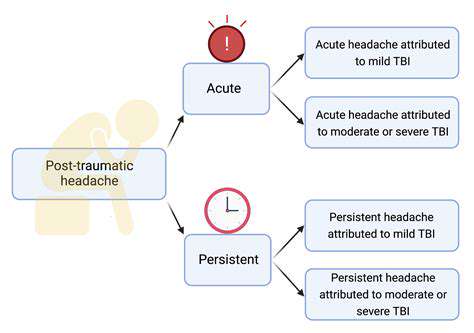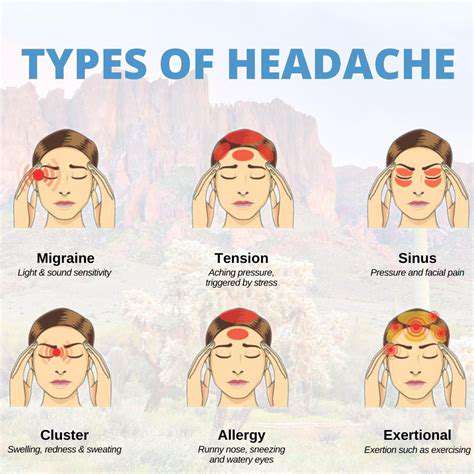Understanding Migraine with Aura: Symptoms and Management

Understanding Migraine with Aura
Migraine with aura is a neurological disorder characterized by recurring headaches, often accompanied by specific sensory disturbances known as auras. These auras can manifest in various ways, including visual disturbances like flashing lights or blind spots, sensory changes like numbness or tingling, and language difficulties. Understanding the specific symptoms and patterns of your own migraines is crucial for effective management.
Recognizing the triggers is a critical step in managing migraines, and keeping a headache diary can be incredibly helpful. This allows you to track your symptoms, noting the time of onset, duration, intensity, and any associated factors. This detailed record can provide valuable insights into potential triggers.
Early Detection and Intervention
Early detection and intervention are key to managing migraine with aura effectively. Prompt medical attention is essential for proper diagnosis and to rule out other conditions that may present similar symptoms. A neurologist can provide a comprehensive evaluation and develop a personalized treatment plan.
Lifestyle Modifications
Lifestyle modifications can play a significant role in minimizing migraine frequency and intensity. Maintaining a regular sleep schedule, managing stress effectively, and consuming a balanced diet are crucial components of a preventative strategy. Dietary changes, such as limiting processed foods and caffeine, can also help control the frequency and severity of attacks.
Medications for Migraine Relief
Several medications can help relieve migraine pain and associated symptoms. Over-the-counter pain relievers like ibuprofen or acetaminophen may provide some relief. However, for more severe or frequent migraines, prescription medications, including triptans, may be necessary.
These medications can be highly effective when taken at the first sign of a migraine attack. It's crucial to follow your doctor's instructions carefully and to communicate any side effects or concerns.
Alternative Therapies
Alternative therapies, such as acupuncture, biofeedback, and massage therapy, may offer complementary approaches to migraine management. These therapies can help manage stress, promote relaxation, and potentially reduce the frequency and severity of attacks. They can be a valuable addition to conventional treatments.
The Role of Stress Management
Stress is a significant migraine trigger for many individuals. Developing healthy stress management techniques can significantly impact migraine frequency. These techniques may include mindfulness practices, deep breathing exercises, or regular physical activity. Stress reduction strategies can be pivotal in controlling migraine episodes.
Seeking Support and Education
Joining support groups or seeking counseling can provide invaluable emotional support and practical strategies for managing migraine with aura. Education about the disorder, including understanding triggers and treatment options, can significantly empower individuals to take control of their condition. Learning about triggers and treatments allows patients to proactively manage symptoms.
Seeking Professional Help and Support

Recognizing the Need for Support
Facing challenges in your personal or professional life can be overwhelming, and it's crucial to recognize when seeking professional help is a necessary step. Often, individuals hesitate to reach out due to perceived stigma or a belief that they can handle things independently. However, acknowledging the limitations of one's own resources and recognizing the value of expert guidance is a critical first step towards a more positive outcome.
Seeking professional support signifies strength and a commitment to well-being. It demonstrates a proactive approach to addressing difficulties and a willingness to invest in personal growth and development.
Understanding the Types of Professional Help
There are various types of professionals available to offer support, each with a unique area of expertise. Counseling, therapy, and coaching are just a few examples, and understanding the differences in their approaches is essential. Choosing the right professional is a personalized decision, dependent on the specific needs and goals of the individual seeking assistance.
Therapy, for example, often involves exploring past experiences and patterns of behavior to understand the root causes of current challenges. Coaching, on the other hand, focuses on achieving specific goals and developing strategies to overcome obstacles in the present.
Identifying the Right Professionals
Finding the right professional can be a journey of exploration, and researching different options is key. Looking for credentials, experience, and a good fit with your personal values and needs is important.
Checking online reviews and recommendations from trusted sources can provide valuable insights into the effectiveness and approach of different practitioners. Communication is key; schedule a consultation to discuss your needs and determine if the professional aligns with your expectations.
Navigating the Process of Seeking Help
The process of seeking professional help can sometimes feel daunting, but it's important to approach it with an open mind and a willingness to explore different options. Understanding that this is a process, not a one-time event, can help individuals feel more comfortable and empowered to continue forward.
Taking the time to prepare for your first session by outlining your goals and concerns can help to ensure that the sessions are productive and meaningful.
Addressing Potential Concerns and Fears
Concerns about confidentiality, cost, and the perceived vulnerability of sharing personal experiences are common anxieties when considering professional help. It is important to discuss these concerns with a potential professional and to ensure that your needs are met.
Many professionals offer resources to address the financial aspect of seeking help. Moreover, the confidentiality of the therapeutic relationship is a cornerstone of effective treatment.
Benefits of Professional Support
Seeking professional support can yield a multitude of benefits, impacting various aspects of one's life. Improved communication skills, enhanced coping mechanisms, and a clearer understanding of personal strengths and weaknesses are often reported by those who engage in professional support. Ultimately, seeking professional help can lead to significant personal growth and improved well-being.
Developing a stronger sense of self-awareness and emotional intelligence are often reported as positive outcomes of professional support.
Maintaining Momentum and Continued Growth
After initiating professional support, maintaining the momentum and continuing personal growth is critical. Regular check-ins, consistent effort, and a commitment to applying learned strategies are crucial for long-term success.
Remembering the progress made and celebrating milestones can help to reinforce the positive impact of professional support and maintain motivation.








